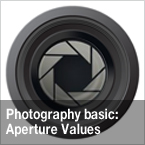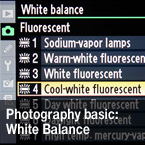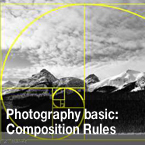Aperture
In optics, an aperture is a hole or an opening
through which light travels. More specifically, the aperture
of an optical system is the opening that determines the
cone angle of a bundle of rays that come to a focus in
the image plane. The aperture determines how collimated
the admitted rays are, which is of great importance for
the appearance at the image plane. If an aperture is narrow,
then highly collimated rays are admitted, resulting in
a sharp focus at the image plane. If an aperture is wide,
then uncollimated rays are admitted, resulting in a sharp
focus only for rays with a certain focal length. This
means that a wide aperture results in an image that is
sharp around what the lens is focusing on and blurred
otherwise. The aperture also determines how many of the
incoming rays are actually admitted and thus how much
light reaches the image plane (the narrower the aperture,
the darker the image for a given exposure time).
An optical system typically has many openings, or structures
that limit the ray bundles (ray bundles are also known
as pencils of light). These structures may be the edge
of a lens or mirror, or a ring or other fixture that holds
an optical element in place, or may be a special element
such as a diaphragm placed in the optical path to limit
the light admitted by the system. In general, these structures
are called stops, and the aperture stop is the stop that
determines the ray cone angle, or equivalently the brightness,
at an image point.
In some contexts, especially in photography and astronomy,
aperture refers to the diameter of the aperture stop rather
than the physical stop or the opening itself. For example,
in a telescope the aperture stop is typically the edges
of the objective lens or mirror (or of the mount that
holds it). One then speaks of a telescope as having, for
example, a 100 centimeter aperture. Note that the aperture
stop is not necessarily the smallest stop in the system.
Magnification and demagnification by lenses and other
elements can cause a relatively large stop to be the aperture
stop for the system.
Sometimes stops and diaphragms are called apertures, even
when they are not the aperture stop of the system.
The word aperture is also used in other contexts to indicate
a system which blocks off light outside a certain region.
In astronomy for example, a photometric aperture around
a star usually corresponds to a circular window around
the image of a star within which the light intensity is
summed.
(Source: Camerapedia.Wikia.com)
|











